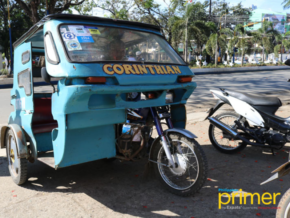Your Ultimate Guide to MRT, LRT, and PNR
Traffic congestion in the Philippines can be unbearable especially during rush hour. The trip through Epifanio de los Santos Avenue or EDSA can seem to go on forever, and the numerous taillights from vehicles of all shapes and sizes make EDSA look like a sea of red during the night.
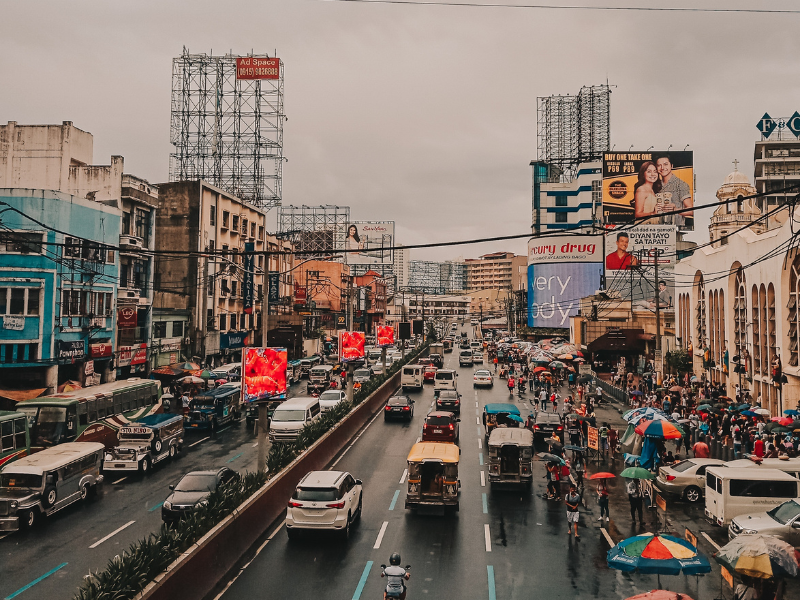 IMAGE from Pexels
IMAGE from Pexels
A considerable majority resort to using the rapid mass transportation system to avoid going through the hassle. So, here’s your ultimate guide to navigating in and out of Manila using the MRT (Manila Metro Rail Transit), the LRT 1 and 2 (Light Rail Transit), and the PNR (Philippine National Railways)!
Things to Remember Before Entering the Station
As with any establishment, you must first go through security before entering any of the train stations. Please be reminded that some items such as pointed or blunt weapons, flammable and poisonous items, illegal drugs, and foul-smelling food are prohibited inside the stations.
While there are security guards around the station, it is still encouraged to secure all your belongings by placing your bags close to your body. It is also best to leave valuable and luxury items at home.
It is also best to note that there are designated areas for women, pregnant individuals, as well as senior citizens and persons with disability (PWD) for their comfort and convenience. These dedicated train cars are usually at the front car of the train to make access safer and easier for them.
You may also ask the assistance of security guards who usually provide wheelchairs for elderly people. Inside the train, designated seats are marked especially for priority passengers.
Finally, before entering any of the stations, plan ahead and know where you are heading to first. You should also check directions before entering the gate to make sure that you are in the correct platform.
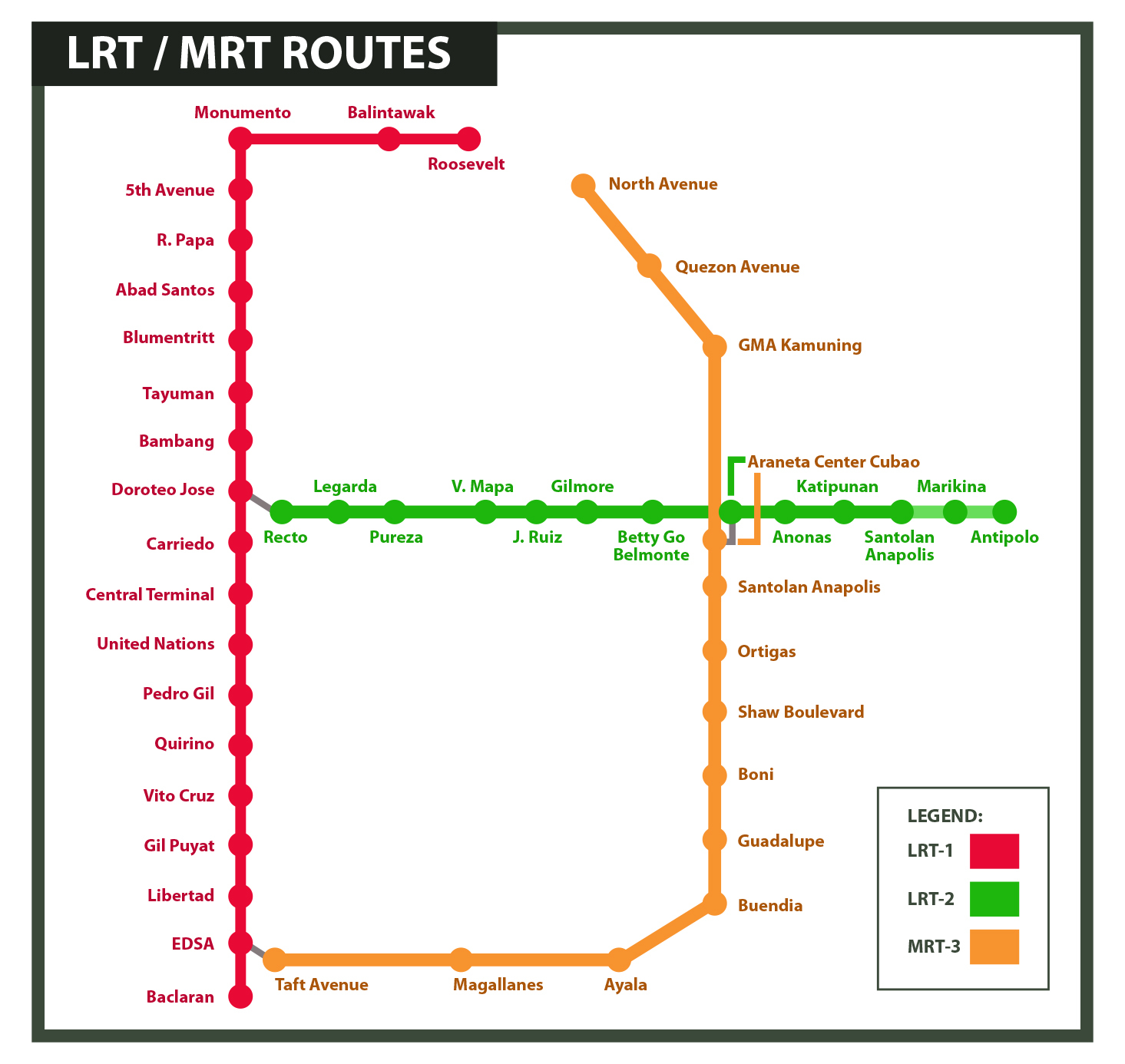
LRT & MRT Routes / IMAGE from Philippine Primer
Metro Rail Transit (MRT-3)
The MRT has been playing a crucial role in providing transportation for commuters since 2000. It is available to commuters traveling from its southernmost station, Taft Avenue, going to North Avenue in Diliman, Quezon City, moving about a million passengers every month.
 IMAGE from the Department of Transportation (DoTR)
IMAGE from the Department of Transportation (DoTR)
The MRT operates starting from 4:30 a.m. to 11 p.m., with morning and afternoon peak hours from 6:30 a.m. to 9:30 a.m. and 4:30 p.m. to 7:30 p.m., respectively during weekdays.
Riding the MRT costs Php 13 to Php 28 depending on the station you are riding from and where you will alight. The ticket could either be a single journey ticket or the reloadable Beep card, also called a stored value ticket. A card costs Php 30 and is used in LRT 1 & 2, MRT 3, P2P buses, and selected bus lines.
Also read: 5 Things You Can Do With Your Beep Card
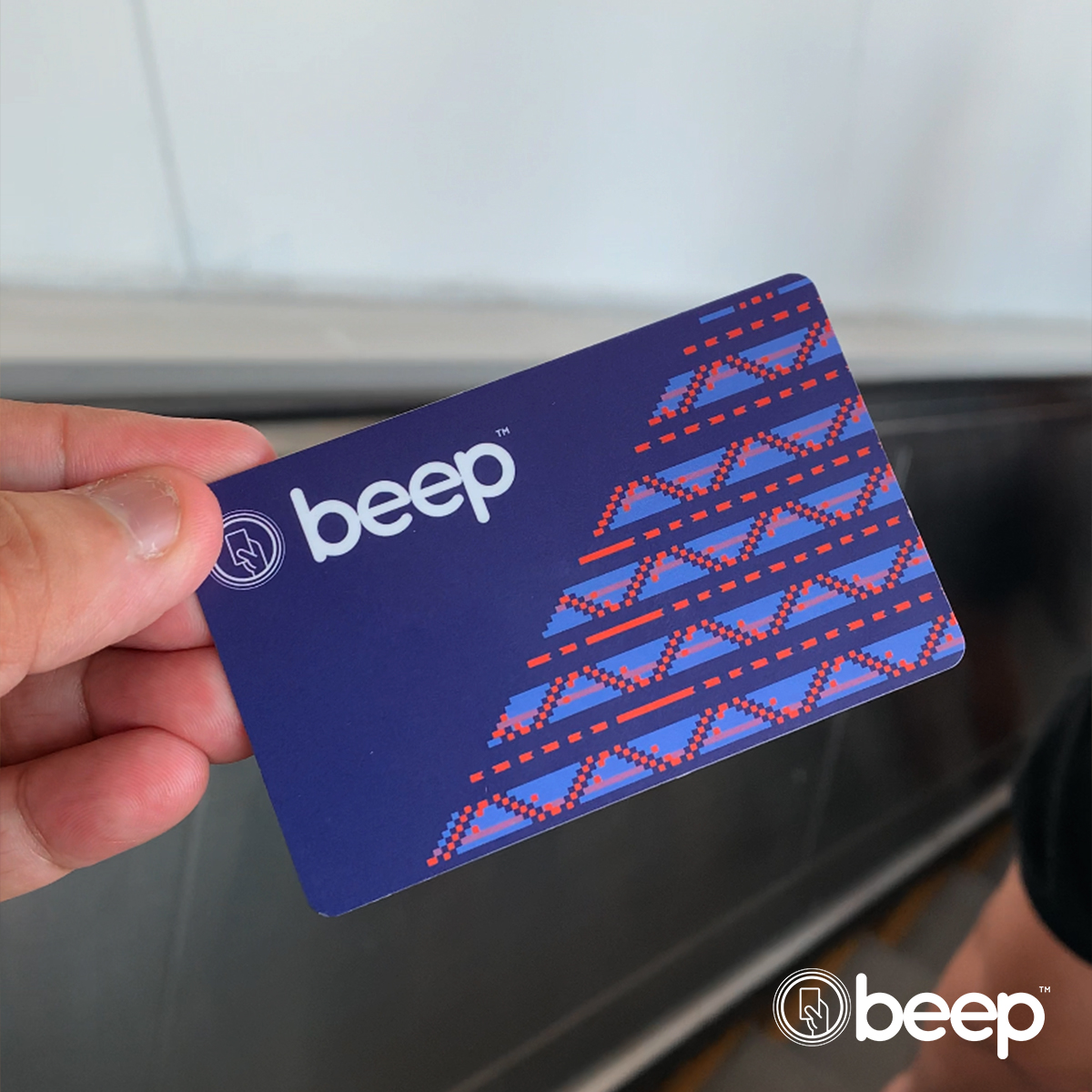 IMAGE from beep card’s Facebook page
IMAGE from beep card’s Facebook page
For passengers who need to bring their fur babies with them, a development has been made in MRT since 2021 where passengers can now bring their pets on board, provided that pets are in diapers and placed inside a carrier, measuring 2×2 feet.
For passengers carrying baggages, please look for the designated lines for small and big bags that will have to go through the X-Ray scanner for inspection. This will allow for a more efficient and speedier inspection, most especially with the volume of passengers riding the trains daily.
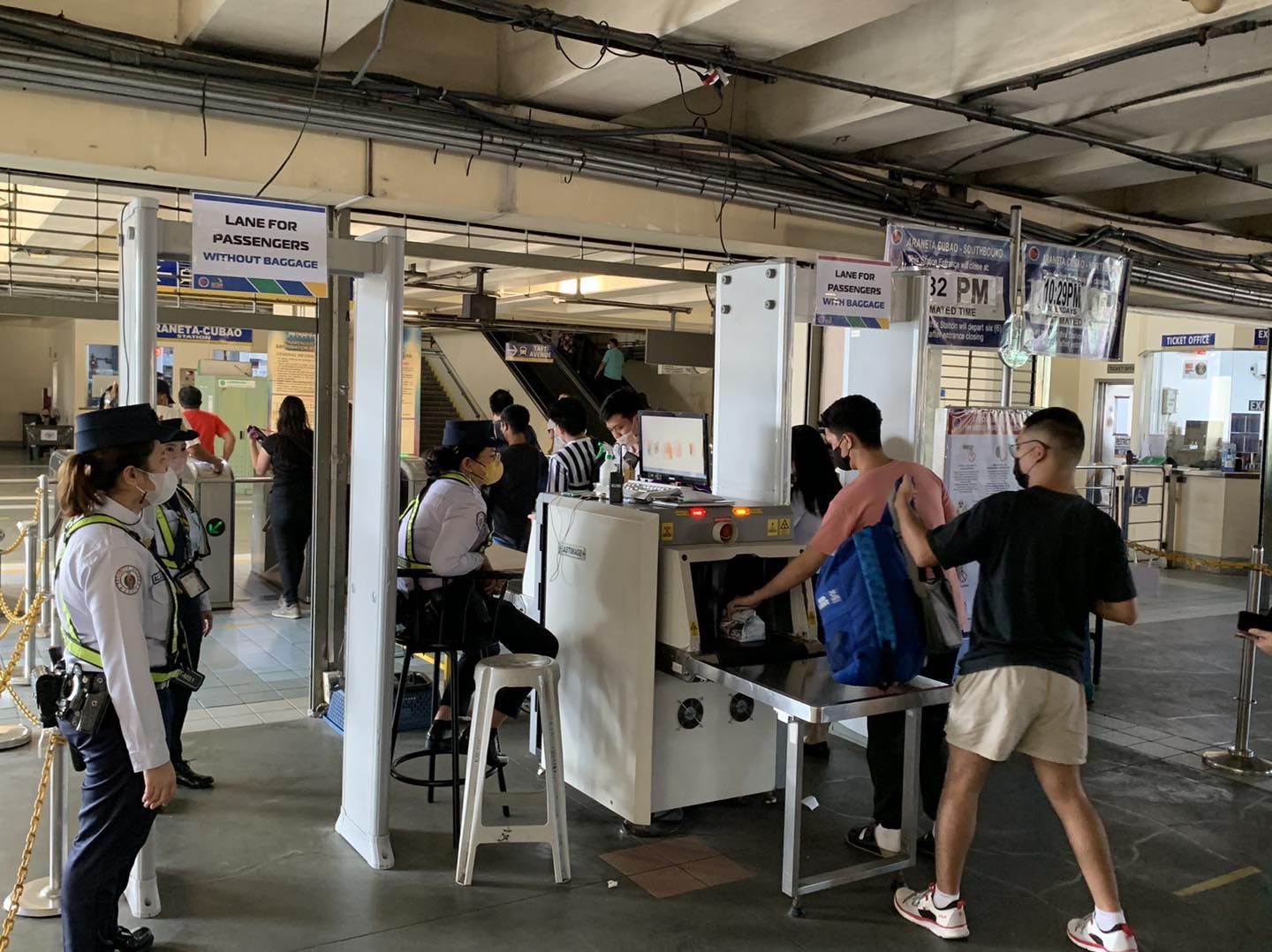 IMAGE from DOTr MRT-3 Facebook page
IMAGE from DOTr MRT-3 Facebook page
MRT Expansion Project
Department of Transportation (DOTr) is currently leading the way for the construction of MRT Line 7, together with Universal LRT Corporation BVI. They are currently constructing an elevated line that “will run from North Avenue in Quezon City to San Jose del Monte in Bulacan.
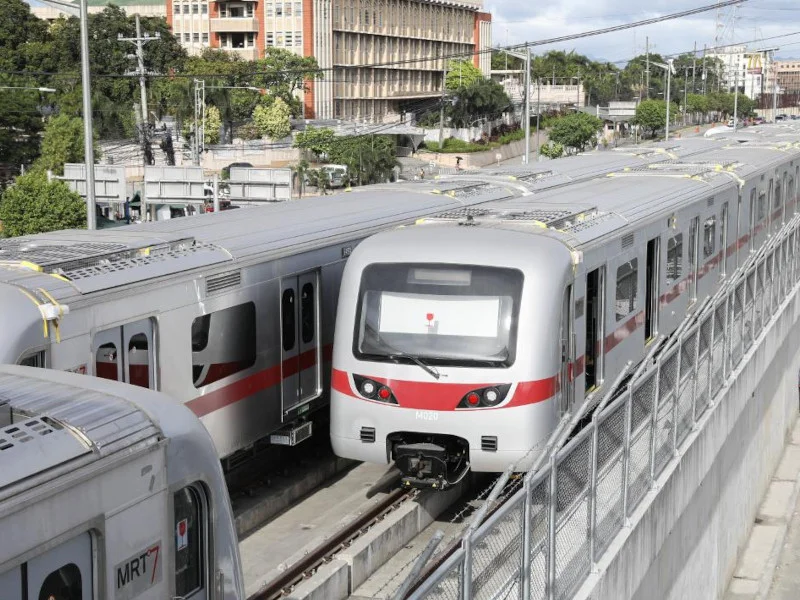 MRT Line 7 / IMAGE from Philippine News Agency
MRT Line 7 / IMAGE from Philippine News Agency
The construction is set to include 14 stations and can accommodate up to “850,000 passengers a day upon completion of the upgrades.” As of January 2023, the MRT Line 7 construction project is 60% completed, according to Railway Technology.
Light Rail Transit 1 (LRT-1)
Inaugurated in December 1984, the Light Rail Transit (LRT) Line-1 is considered the first and the oldest rapid transit line in the Philippines. It is also the second light rail in Southeast Asia and goes through the major cities of Manila, with stops in Makati, Pasay, and Quezon City, among others.
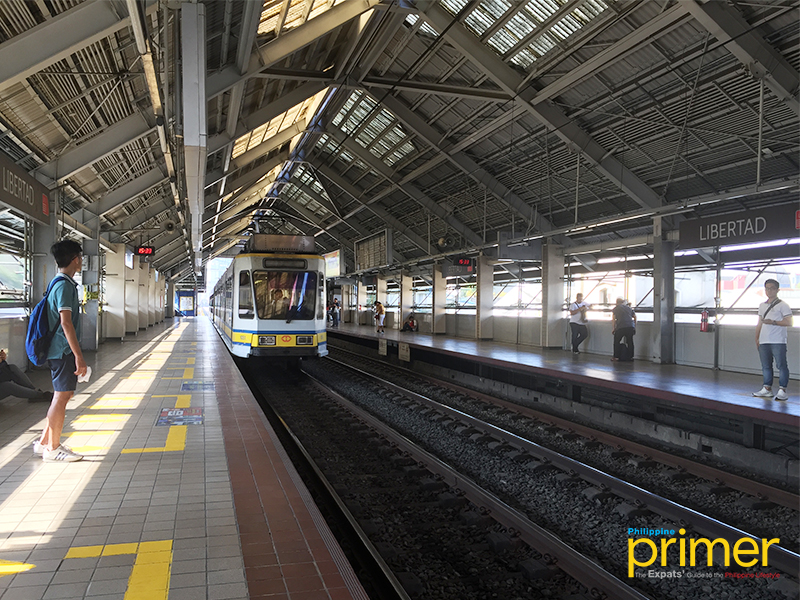 IMAGE from Philippine Primer
IMAGE from Philippine Primer
Tickets range from Php 15 to Php 30 depending on your destination and operates starting from 4:30 a.m. to 10:00 p.m. from Baclaran and 10:15 p.m. from Roosevelt during weekdays. During weekends and holidays, LRT-1’s last train will take you from 9:30 p.m. from Baclaran and 9:45 p.m. from Roosevelt.
 LRT 1 Route Map / IMAGE from Light Rail Manila Corporation
LRT 1 Route Map / IMAGE from Light Rail Manila Corporation
For locals and foreigners who want to explore the Metro’s best restaurants, tourist destinations, and more, LRT-1 has a mobile application called ikotMNL Mobile App that gives you real-time updates regarding the station’s crowd situation, the train’s arrival and departure, and the nearest restaurants, malls, and destinations worth the visit.
You may download the ikotMNL Mobile App through Google Play Store or App Store.
LRT-1 Expansion Project
For those traveling to the South, there is something to look forward to this 2024 with the LRT-1 Cavite Extension Project.
According to the Light Rail Manila Corporation (LRMC), this project will cover “several major cities including Quezon City, Caloocan, Manila, Pasay, and Paranaque, all the way to Bacoor, Cavite.” From 20 stations, this expansion will yield 28 station in total and can accommodate around 800,000 passengers daily.
 IMAGE from Light Rail Manila Corporation’s Website
IMAGE from Light Rail Manila Corporation’s Website
Further, LRMC shared that the project will lessen the travel time of passengers coming from Pasay City going to Cavite. This will allow passengers to travel “from an hour and half to just 25 to 30 minutes,” said LRMC.
Also read: Expat’s Guide to LRT-1 Stations in Manila
Light Rail Transit 2 (LRT-2)
Meanwhile, the LRT Line 2 is connected to the LRT-1 through the latter’s Doroteo Jose Station. The LRT-2 is a way of going through the Metro from the Recto Station in Manila and ending in Antipolo Station in Rizal.
Just like the LRT-1, tickets for LRT-2 range from Php 15 to Php 30 and operates from 5:00 a.m. to 9:00 p.m. from Antipolo Station to Recto Station and 9:30 p.m. from Recto to Antipolo. This includes the weekends and holidays.
Also read: Expats’ guide: LRT2 Stations
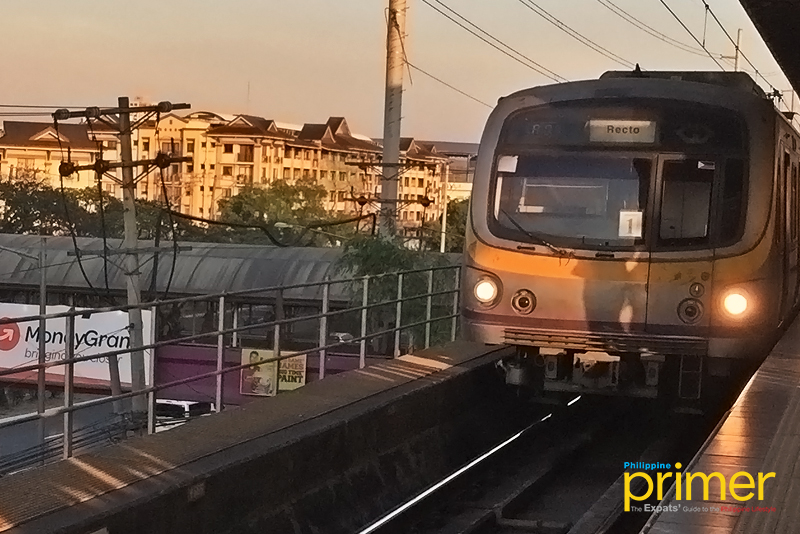
The LRT-2’s Araneta Center-Cubao Station connects to the MRT-3 through the Gateway Mall and Farmer’s Plaza complex, letting commuters conveniently transfer from LRT-2 to MRT-3. You may view LRT-2’s route map here.
LRT-2 Expansion Project
Just like LRT-1, LRT-2 will also undergo a construction project, known as the West Extension Project, which will start in 2025. This will link Recto to Tondo and add three (3) more stations, which will be in Tutuban, Divisoria, and Pier-4.
The Philippine National Railways (PNR)
Perhaps the most encompassing of all the railway transit systems in the Philippines is the Philippine National Railways (PNR) as it extends beyond Metro Manila. It has been in operation since November 24, 1892, making it the oldest railway system in Southeast Asia.
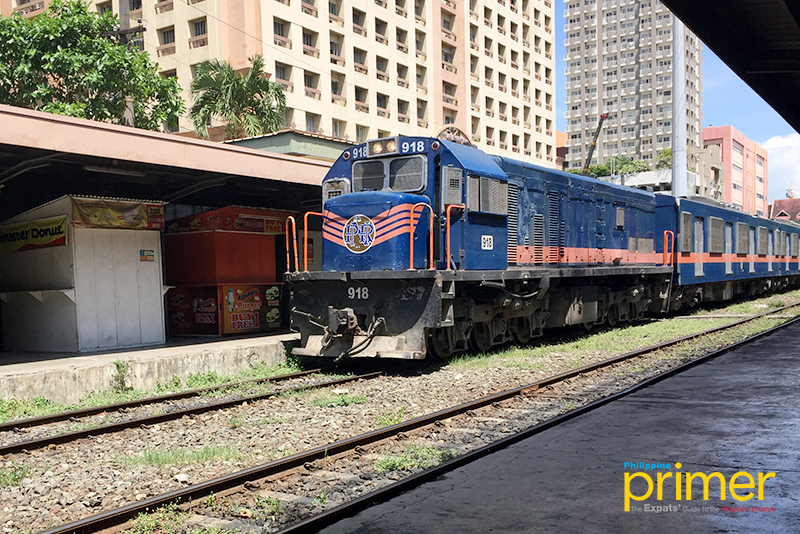
However, PNR’s NCR operations are temporarily suspended starting March 28, 2024 and will reopen after five years. This is due to the construction of the North-South Commuter Railway (NCSR) project, which aims to connect as far as Clark, Pampanga to Calamba, Laguna.
For those in love with traveling, this would mean that tourist destinations such as Enchanted Kingdom and Rizal Shrine in the South is now within reach from people in the North. The project will also allow people from the South to reach Clark International Airport more swiftly as the NSCR project will cut travel time by half.
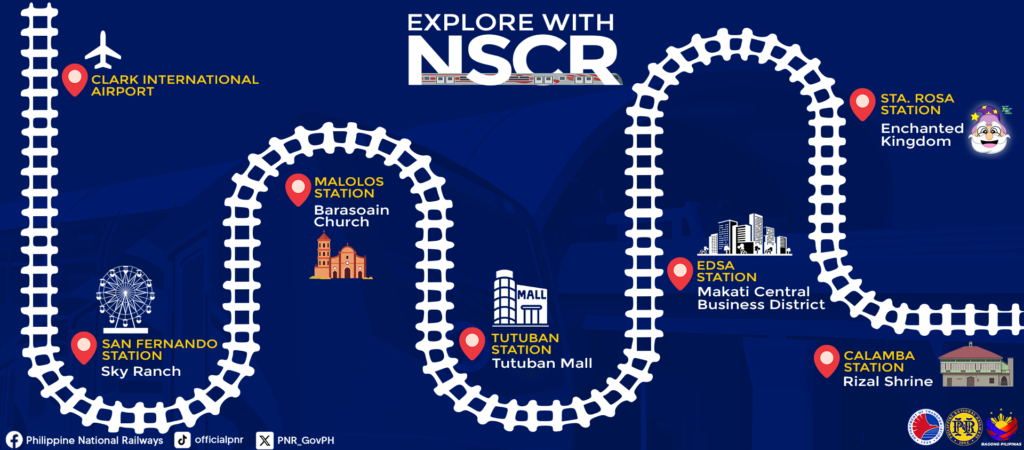 IMAGE from Philippine National Railway’s website
IMAGE from Philippine National Railway’s website
For now, there are southbound buses available from Divisoria (Tutuban) to Starmall in Alabang and vice versa for commuters who are affected by PNR’s suspension of operations. This will include alternative bus stops near the railways and adjusted trip schedules for commuters.
 Tutuban to Alabang Bus Route via South Luzon Expressway / IMAGE from Philippine National Railways
Tutuban to Alabang Bus Route via South Luzon Expressway / IMAGE from Philippine National Railways
For those coming from the South, commuters might want to check this alternative route guide to help you in your future trips to NCR:
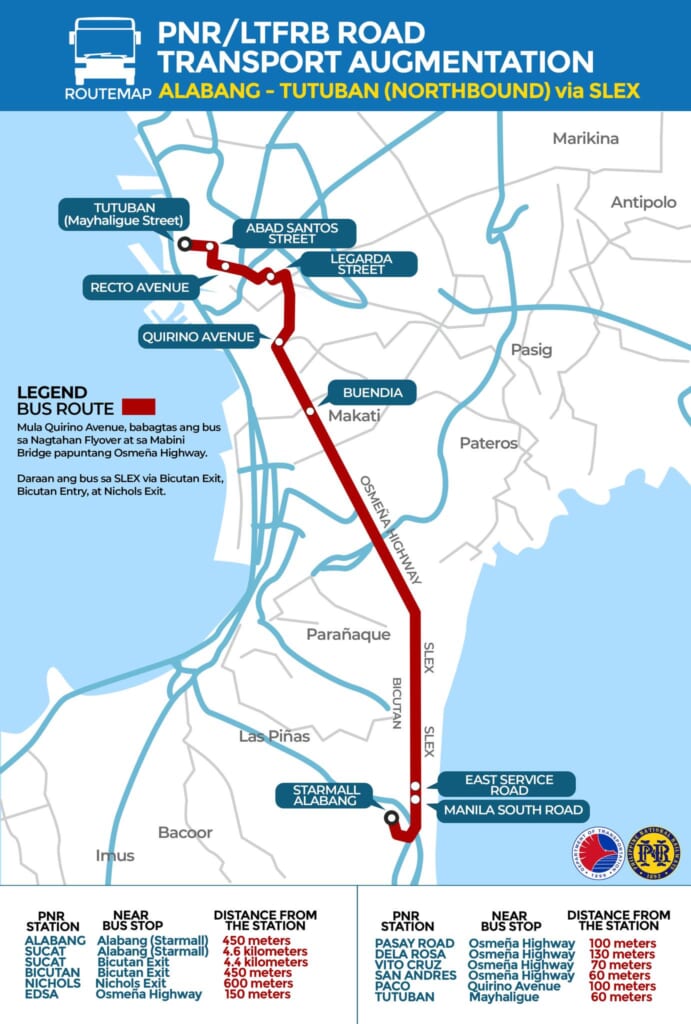 Alabang to Tutuban Bus Route via South Luzon Expressway / IMAGE from Philippine National Railways
Alabang to Tutuban Bus Route via South Luzon Expressway / IMAGE from Philippine National Railways
Also Read: Life Hacks for Expats: Navigating Traffic in the Philippines
Other Pro Tips for Passengers
To ensure everyone’s safety, it is always advised to let people off the train first before boarding. Give priority to pregnant individuals, the elderly, as well as differently-abled people to create a safe and secure environment for everyone.
Further, with the rising cases of Pertussis, a highly contagious respiratory tract infection, as well as COVID-19 that still affects people to this day, it is highly encouraged to wear a face mask at all times. It is also best to refrain from making loud noises or causing disturbance to passengers as part of the train etiquette.
Let this ultimate guide be your thrilling adventure through the bustling Metro railway systems! Hold on tight before you reach your desired station as you start your great Metro Manila journey.
Sources: DOT website, Light Rail Transit, Philippine National Railways, Rappler, CNN Philippines, The Metro Rail Transit, Light Rail Manila Corporation, Railway Technology





